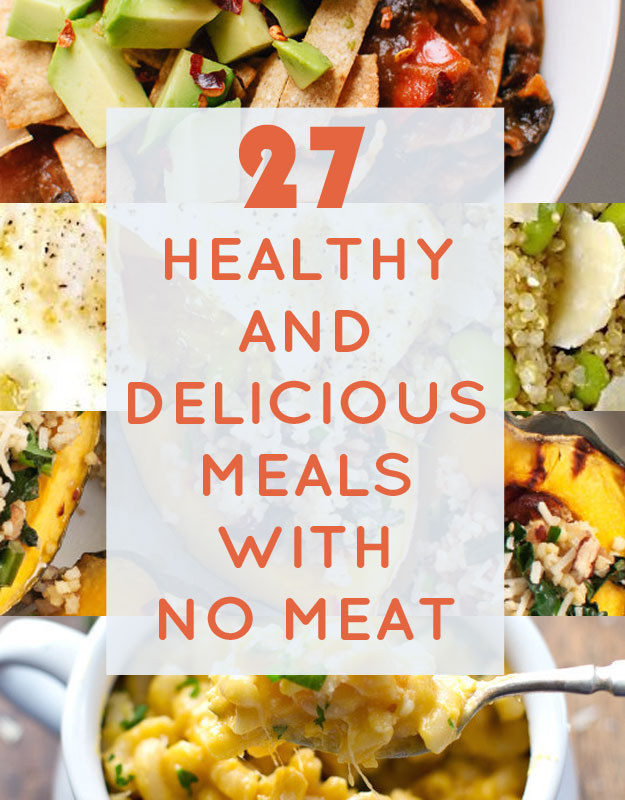How To Stay Healthy Without Eating Meat
Tuesday, February 14, 2023
Edit

How To Stay Healthy Without Eating Meat
The Benefits of Eating a Plant-Based Diet
A plant-based diet is one that is primarily composed of plant-based foods such as fruits, vegetables, legumes, grains, nuts, and seeds. Many people find that eating a plant-based diet is beneficial to their health and can help them to achieve and maintain a healthy weight, reduce their risk of chronic diseases, and even improve their overall sense of well-being.
In addition to the health benefits, there are also environmental and ethical benefits to eating a plant-based diet. A plant-based diet requires less resources to produce than an animal-based diet, which can help reduce carbon emissions and water pollution. Additionally, eating a plant-based diet can help reduce animal suffering, as animals raised for food are often kept in cramped, unnatural conditions and are subjected to painful procedures.
What Foods Should Be Included in a Plant-Based Diet?
A plant-based diet should include a variety of foods from the five food groups: fruits, vegetables, grains, legumes, and nuts/seeds. It is important to include a variety of foods from each group in order to ensure that you are getting all of the essential nutrients your body needs.
Fruits and vegetables are a great source of vitamins and minerals, and should make up the largest portion of your diet. Aim for at least five servings of fruits and vegetables each day. Grains provide carbohydrates and fiber, and can be found in bread, pasta, cereal, and other foods. Legumes, such as beans, lentils, and chickpeas, provide protein and fiber. Nuts and seeds are an excellent source of healthy fats and can also be a great source of protein.
How to Get Enough Protein on a Plant-Based Diet
A common misconception about plant-based diets is that they are lacking in protein. However, this is not the case. There are many plant-based foods that are rich in protein, such as legumes, nuts and seeds, and even some grains and vegetables. Aim to include a variety of protein-rich foods in your diet, such as beans, lentils, quinoa, nuts, and seeds.
It can also be helpful to include plant-based protein powders in your diet. These are made from sources such as soy, peas, hemp, and other plant-based foods. Protein powders can be added to smoothies, oatmeal, and other recipes to boost the protein content.
How to Get Enough Iron on a Plant-Based Diet
Iron is an essential nutrient that plays an important role in transporting oxygen throughout the body. It can be difficult to get enough iron on a plant-based diet, so it is important to include iron-rich foods in your diet. Good sources of iron include legumes, nuts and seeds, dark leafy greens, tofu, and fortified cereals and breads.
It is important to note that the body absorbs iron from plant-based sources differently than it does from animal sources. To increase the absorption of iron from plant-based sources, it is important to include foods that are rich in vitamin C. Vitamin C helps to boost the absorption of iron, so pair iron-rich foods with foods such as citrus fruits, bell peppers, and broccoli.
How to Get Enough Calcium on a Plant-Based Diet
Calcium is an essential nutrient that is important for bone health. While dairy products are a good source of calcium, they are not the only source. There are many plant-based foods that are also rich in calcium, such as fortified milks and juices, dark leafy greens, tofu, almonds, and sesame seeds.
In addition to eating calcium-rich foods, it is also important to get enough vitamin D. Vitamin D helps the body absorb calcium, so getting enough vitamin D is essential for bone health. Good sources of vitamin D include fortified milks and juices, mushrooms, and fatty fish.
Conclusion
Eating a plant-based diet can be a healthy and sustainable way to get the nutrients your body needs. While it can take some time to adjust to this type of diet, the health, environmental, and ethical benefits make it worth the effort. To ensure you are getting all the nutrients your body needs, aim to include a variety of protein-rich, iron-rich, and calcium-rich foods in your diet. With a bit of planning and knowledge, you can easily stay healthy without eating meat.
9 Ways to Get Protein Without Eating Meat • SHIFT

15 Ways To Get More Protein Without Eating Meat
This is What Happens to Your Body When You Stop Eating Meat | Top 10

29 Meat-Free Meals You Can Make Without Your Stove

27 Delicious And Healthy Meals With No Meat

How To Get Enough Protein Without Eating Meat | Whole food recipes

How to Hit Protein WITHOUT Eating Meat (CRUCIAL FOR FATLOSS) - YouTube

These Things Happen To Your Body When You Stop Eating Meat
